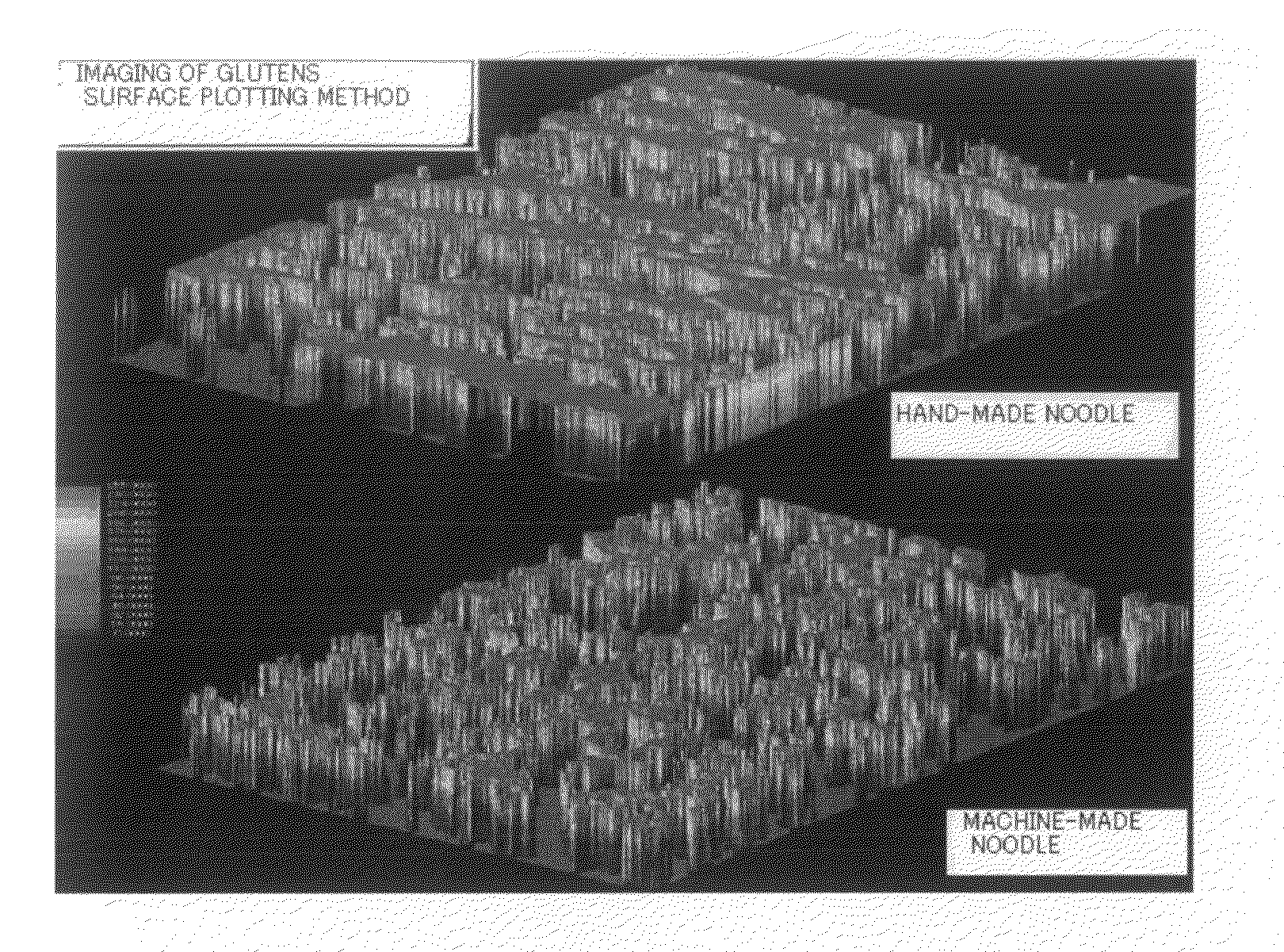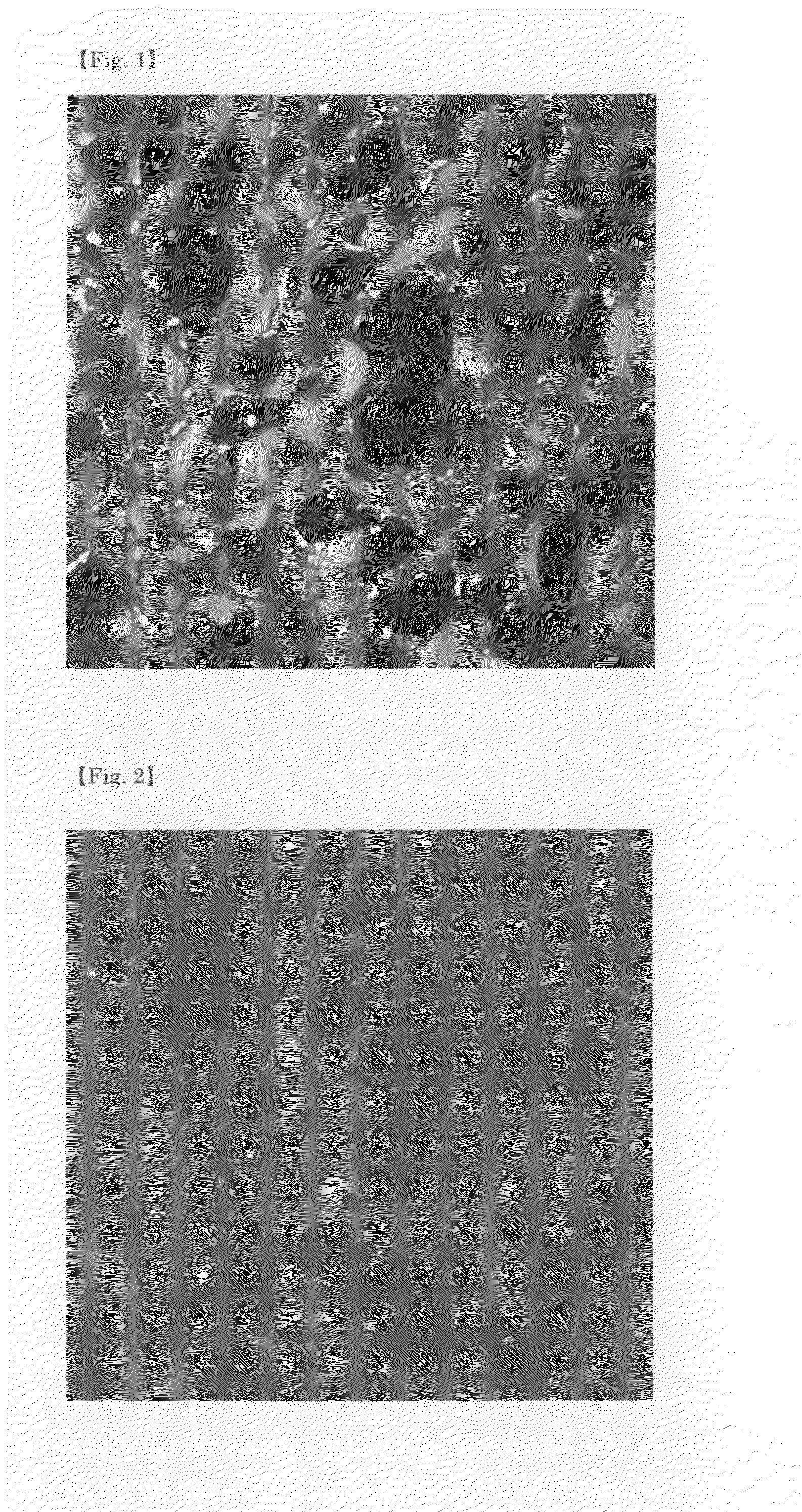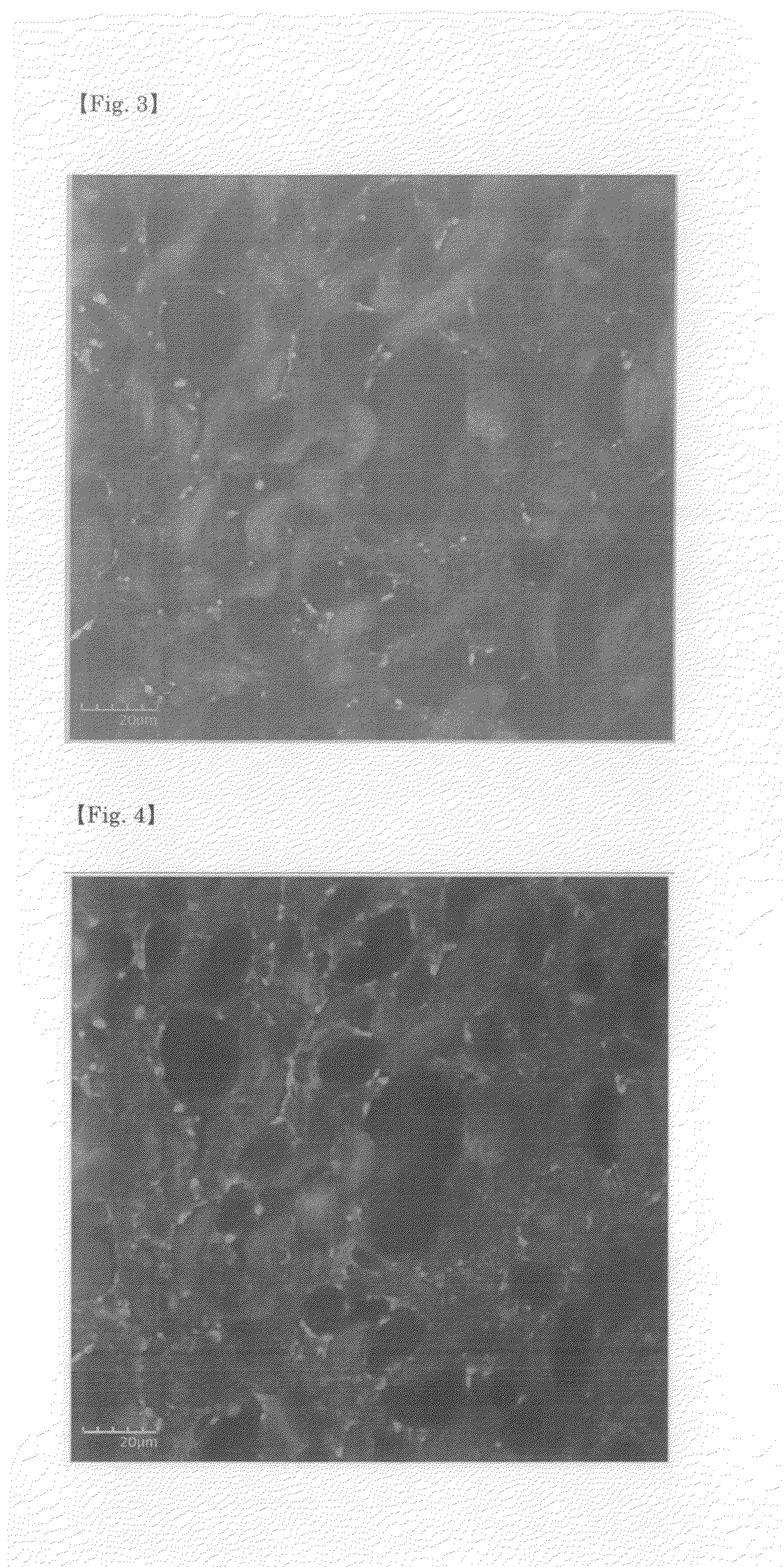Method of forming tissue structure image of processed food or raw material for producing the same
a tissue structure and raw material technology, applied in the field of forming the textural structure image of a processed food or raw material, can solve the problems of unclear borders between the respective components, difficult structural analysis of borders between the components, and the inability to observe the textural structure obtained from using such apparatuses and devices. the effect of discriminating the microstructure of the internal textur
- Summary
- Abstract
- Description
- Claims
- Application Information
AI Technical Summary
Benefits of technology
Problems solved by technology
Method used
Image
Examples
reference example 1
Preparation of Fluorescent Dye
[0061]3 g of Fast Green was added to 1000 ml of distilled water, and the mixture was stirred, whereby a uniform fluorescent dye was prepared.
reference example 2
Preparation of Fluorescent Dye
[0062]5 g of Magenta II (Acid Magenta) was added to 1000 ml of distilled water, and the mixture was stirred, whereby a uniform fluorescent dye was prepared.
reference example 3
Preparation of Fluorescent Dye
[0063]3 g of Nile Blue was added to 1000 ml of distilled water, and the mixture was stirred, whereby a uniform fluorescent dye was prepared.
PUM
| Property | Measurement | Unit |
|---|---|---|
| fluorescence wavelength | aaaaa | aaaaa |
| fluorescence wavelength | aaaaa | aaaaa |
| fluorescence wavelength | aaaaa | aaaaa |
Abstract
Description
Claims
Application Information
 Login to View More
Login to View More - R&D
- Intellectual Property
- Life Sciences
- Materials
- Tech Scout
- Unparalleled Data Quality
- Higher Quality Content
- 60% Fewer Hallucinations
Browse by: Latest US Patents, China's latest patents, Technical Efficacy Thesaurus, Application Domain, Technology Topic, Popular Technical Reports.
© 2025 PatSnap. All rights reserved.Legal|Privacy policy|Modern Slavery Act Transparency Statement|Sitemap|About US| Contact US: help@patsnap.com



